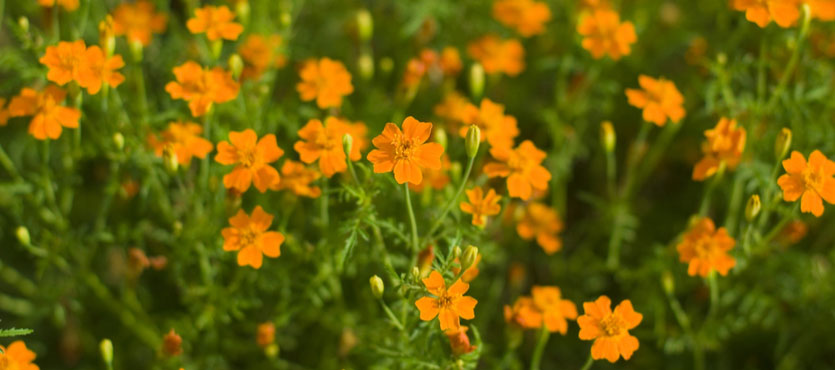Groundcover plants, such as willow and ivy, serve so many excellent niches—they blanket boring spaces in beauty, fight back against weeds, and offer a low maintenance alternative to grass. Groundcovers offer the perfect finishing touch to South Florida landscaping.
There are fast and slow-growing groundcover varieties available. If you’re working with a smaller space, a slower growing species might work best so that it doesn’t get away from you. You’ll need to regularly hedge the edges to keep groundcover in line; these plants like to grow and grow some more.
Some groundcovers, like creeping fig, grow vertically up walls and fences, creating a beautiful look that only gets better with time.
Groundcover Plants That Thrive in South Florida
Ferns make a surprisingly great option for groundcover. There are a variety of species that grow out nicely, such as foxtail fern, which can grow in sun or shade. Garden ferns are great when added as foundation plants, fillers, or in areas that get more shade than most other plants can withstand. Other good fern options include Macho and Holly.
Junipers are a wide-spreading and low-growing plant, making them a good option for groundcover.
Certain species of Perennials fill in ground areas nicely, such as lantana and blue daze, both of which grow wide and low.
Annuals, such as impatiens, add a blanket of color and can thrive in sun or shade in the winter but require all shade in the summer.
Asiatic Jasmine likes both sun and shade, is tough and good looking. It takes time to mature but once it does it packs a powerful punch against weeds.
Baby Sun Rose grows close to the ground and blooms all year long. It has small leaves and pretty little flowers that are usually red, but can be golden yellow too. Bonus perk: they attract hummingbirds!
Coral Creeper is a lovely reddish-coral groundcover that ‘creeps’ its way around landscaping. It is commonly used for informal landscaping and it’s an excellent plant for cascading over the edges of a planter. Growing just 1 to 2 feet in height, this plant grows fast and can cover a lot of surface in a relatively short time.
Creeping Fig is the perfect combination of groundcover and vine, it can grow on the ground or vertically up walls, rocks, etc.
Ice plant remains a popular groundcover, especially in hot areas exposed to direct sunlight. Ice plant thrives in full to partial sun, prefers hot locations, and requires very little water.
Railroad Vine is a quick growing groundcover, one of the quickest in fact. The plant grows in such a way that it resembles railroad tracks—hence how it got its name.
Other great groundcover plants for landscaping in South Florida include:
Beach Sunflower
Dwarf Chenille
Dwarf Oyster Plant
Golden Pothos
Peperomia
Purple Queen
Sunshine Mimosa
Sweet Potato Vine
Perennial Peanut
Beware of Trees
Whatever you do, avoid planting groundcover plants directly over tree roots. In doing so you could rob the tree’s roots of vital oxygen supply, leading to rot. When planting new trees, if you plan to add ground covering, use raised beds or raise the tree’s planting depth.
Great uses for groundcover plants:
- Around the outskirts of a building’s foundation
- Outlining walkways
- Between sidewalks and curbs
- In planters or hanging baskets
- Cascading over a wall
- Garden walkways, in between plants and trees
How Many Groundcover Plants Do You Need?
How many groundcover plants does it take to cover X amount of space? Luckily, there’s an equation for that. You just need to figure out the area you need to cover as measured in square feet. Remember, length X width = square footage.
Next, how far apart do you plan to space groundcover plants? Ice plant, for instance, should be planted 2 feet apart. While railroad vines can be placed as much as 3 to 5 feet apart.
If you are going to space them 6” apart, you use the multiplier of 6, which is 4, to plug into the equation.
50 square feet X 4 = 200
That means you need 200 plants—sound like more than you were expecting? Simply increase the space between plants to reduce the number of plants you need to buy. Overtime, groundcover plants will fill in extra space you’ll just need to exercise more patience.

